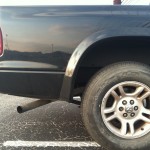Happy 40th Birthday, Clean Water Act
No one likes turning forty, but today the Clean Water Act is celebrating its birthday. On October 18, 1972 the act was signed into law by Congress.
Before the Clean Water Act, two-thirds of waterways were deemed unsafe for fishing and swimming, according to the Environmental Protection Agency (EPA). In a look back at the act today, EPA Acting Assistant Administrator for the Office of Water Nancy Stoner writes that until the act was passed, “municipal and household wastes flowed untreated into our rivers, lakes and streams. Harmful chemicals were poured into the water from factories, chemical manufacturers, power plants and other facilities.”
There was public pressure at the time to sign the act into law. In June 1969, an oil slick on the Cuyahoga river in Ohio actually caught fire, burning for half an hour and causing fifty thousand dollars in damage. Lake Erie was deemed a “giant cesspool,” with only three of its 62 beaches rated completely safe for swimming.
Here’s how TIME magazine described the situation at the time:
“The Potomac reaches the nation’s capital as a pleasant stream, and leaves it stinking from the 240 million gallons of wastes that are flushed into it daily. Among other horrors, while Omaha’s meat packers fill the Missouri River with animal grease balls as big as oranges, St. Louis takes its drinking water from the muddy lower Missouri because the Mississippi is far filthier. Scores of U.S. rivers are severely polluted—the swift Chattahoochee, majestic Hudson and quiet Milwaukee, plus the Buffalo, Merrimack, Monongahela, Niagara, Delaware, Rouge, Escambia and Havasupi. Among the worst of them all is the 80-mile-long Cuyahoga, which splits Cleveland as it reaches the shores of Lake Erie.
No Visible Life. Some river! Chocolate-brown, oily, bubbling with subsurface gases, it oozes rather than flows. ‘Anyone who falls into the Cuyahoga does not drown,’ Cleveland’s citizens joke grimly. ‘He decays.'”
“In the 40 years since, the Clean Water Act has kept tens of billions of pounds of sewage, chemicals and trash out of our waterways,” Stoner writes today. “Urban waterways have gone from wastelands to centers of redevelopment and activity, and we have doubled the number of American waters that meet standards for swimming and fishing.”
But Stoner also notes that the country’s water pollution problems haven’t been completely solved. She notes that one-third of the country’s waterways under assessment “still don’t meet water quality standards” and that nitrogen and phosphorus pollution of waterways is on the rise. And water infrastructure (things like water treatment plants, drinking water systems and waste water treatment) needs improvement across the nation. “The American Society of Civil Engineers gave it a D-, the lowest grade given to any public infrastructure,” she writes. That aging infrastructure, combined with a growing population, could further stress water supplies.
A new app released by the EPA today lets you see what kind of shape rivers, lakes and streams across the country are in. It’s called ‘How’s My Waterway,’ and is available for desktops and smartphones. You can check it out here. (We gave it a spin, but it froze. Perhaps the water’s too cold?)


